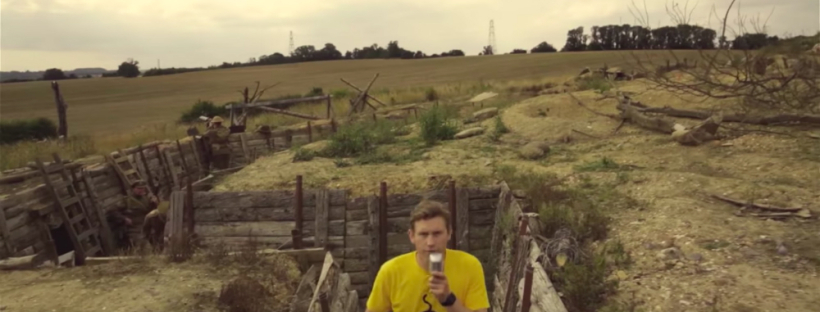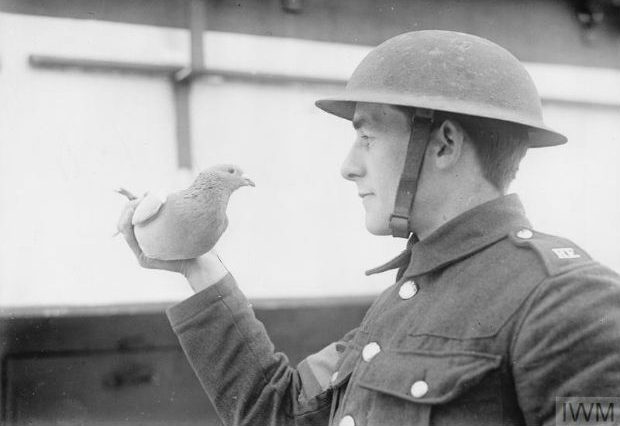LOUISE QUICK
CONTENT PRODUCER & PUBLIC HISTORIAN

History Bombs: Public history review
9 January 2018
For a recent assignment for my Masters we were asked to review a piece of Public History and I choose a video by the wonderful team (and new BAFTA winners) History Bombs. While it’s a little longer (and more academic) than my average blog post I thought ‘what the heck?’, I’m proud of it so why not post it. Enjoy!
The last decade has seen a wave of public historians on a mission to convince the masses that history is cool. This is certainly no easy task, considering history’s engrained reputation as a subject full of dusty books, out-dated ideas and stuffy old men.
One of the latest challengers taking up the fight is History Bombs. This team of young, determined historians and film-makers recently won a BAFTA for their efforts, producing fun and punchy videos intended to inspire students and complement teaching.
Essentially teaching aids, these snappy five-minute videos introduce the big facts and arguments of particular historical events for students, aged 11-16, and each video comes with handy teacher’s notes, worksheets and quizzes. Clearly inspired by the success of TV shows such as Horrible Histories, History Bombs is an example of content which – to embrace the cliché – brings history to life in a high-energy and engaging way, essentially tricking people into learning.
Anyone brought up in the UK will remember the joy felt, as a student, when the teacher would wheel the TV in at the start of class. While wheeled TVs have likely gone the same way as cassettes and snap bracelets, I imagine students feel the same delight now when the teacher turns on the projector. Video content will always be a sure-fire way of gaining the full attention of a room of teenagers.
While History Bombs is first and foremost a business selling school resources, some of their free videos have taken on a viral identity of their own – their YouTube channel has racked up almost 5,000,000 views so far.
Their most recent upload looks at the author – and new face of the ten-pound note – Jane Austen. However, their video on World War One (above) remains one of their most popular creations. A whirlwind tour through the First World War, led by a news-reporter-turned-narrator, it’s loaded with information as well as plenty of clever rhyming, rapping, props and the occasional explosion.
It is so fact-heavy that the contents of this one-take video includes, (but is not limited to), the following: the 1914 shooting of the Archduke Ferdinand, Kaiser Wilhelm II’s empirical plans, the Schlieffen Plan, the Gallipoli Campaign, chemical weapons, trench warfare, volunteer nurses, German naval strategies, the Russian Revolution, the German-Russian union and new war technologies. All in six minutes.
For most viewers, packing in this much means the facts are often lost among the chaos of information and speedy dialogue. Saying that, if you manage to keep up, the attention to detail is impressive.
The team has clearly made conscious efforts to include some more neglected aspects of the war, including the commonwealth contributions. Popular media rarely focuses on those soldiers from as far as Canada, Bermuda, the West Indies, India, South Africa, Australia and New Zealand.
Women’s involvement in the war effort also features. One volunteer nurse almost has her own monologue when, in reaction to a soldier’s comment “trenches are no place for a girl”, she announces:
“Neither are they fit for a man! / But we’re here to help the best we can / And who do you think manufactured your gun? / Us girls will see this war is won”
Credit to the writers. In these few sentences, some of women’s hands-on contributions on the front line and home front are put centre stage. The Red Cross’ Volunteer Aid Detachments (VADs) had 90,000 members working abroad and at home during the war and by 1918 more than 700,000 women had become ‘munitionettes’.
There is also a brief nod to carrier pigeons. Why pigeons were deemed more worthy of a mention than, say, the Mark I tank – the first tank to see battle and a revolutionary feat of engineering– isn’t clear, but then again there is something oddly endearing about the stories of these hard-working feathery soldiers. One was said to have saved four airmen’s lives after struggling against strong gales to report their crash, only to die of exhaustion upon its arrival. Where is that Oscar-winning movie?

There is more than just a touch of Horrible Histories influence in this video. Lion Television’s sketch comedy show, Horrible Histories was initially for children and aired on CBBC, but it quickly amassed an enthusiastic adult following – and a BAFTA – thanks to its hilarious Monty Python style humour. Many teachers have admitted to using its sketches to liven up classes.
While I refuse to use the phrase ‘funducational’ sincerely, both Horrible Histories and History Bombs successfully blur that line between learning and comedy. The key difference, however, is that while the CBBC show prioritises entertainment – using pop-up placards to inform its viewers when it may be telling the truth – History Bombs’ priority is firmly within the education camp.
Put simply, History Bombs produces educational material that happens to be entertaining, while Horrible Histories creates entertaining material that happens to be educational.
History Bomb’s determination to cover all the facts does have adverse effects at times. In attempting to explain the breakout of war the video runs aground, stumbling its way through the complex web of alliances, politics and bureaucracy. Despite funny characterisations and gun shots, ultimately they are forced to resort simply to a map of Europe and a pointer. To their credit, they created a separate video wholly dedicated to the explanation, entitled ‘Whose Fault Was It?’.
Combining comedy and history can be tricky line to tread. While the expanse of time between ourselves and medieval Britain means that History Bombs – and any production company – can tackle subjects like the bubonic plague with relative ease and plenty of comedy, covering the reality of something more recent, such as the First World War, requires considerably more tact and sensitivity.

http://www.iwm.org.uk/history/the-incredible-carrier-pigeons-of-the-first-world-war
The laughs in this video come mainly from silly and exaggerated characterisations – think bad accents, over-the-top facial hair and dramatic gesticulations. It’s also hard to miss the fun made at the expense of the Americans, who look vaguely like extras from Top Gun and declare “the enemy better reach for the skies” before ducking from gunfire.
Perhaps as a way of actively recognising the gravity of the conflict, the video concludes on a rather sombre note, with the narrator reflecting:
“All in all, a tragic loss / Europe secured, but at what cost? / A generation lost / We are forever in debt / 100 years hence / Lest we forget”
Talking straight down the camera in a bright yellow t-shirt, the narrator stands out as the modern-day visitor to the foreign land of the past. Perhaps he represents us, the student and viewer, attempting to traverse the events of the First World War. Either way, the authoritative narrator character works well considering these videos are intended as teaching aids.
From a public history perspective, questions are raised about History Bombs’ creative licence. If the videos are teaching resources, intended to sincerely complement the school curriculum, then how much freedom does the team actually have in terms of choosing the topics and angles?
Also, while it is refreshing to see nods to the commonwealth soldiers and volunteer nurses, beyond that the narrative is one that is traditional, recognisable and, ultimately, British. For example, the video starts by essentially blaming the German leader’s militaristic attitude and desire for empire, (the irony here, given Britain’s mighty empirical realm, is almost comedy itself).
However, if this video’s approach seems a little stale and outdated then, as teaching aids, perhaps that tells us more about the British school curriculum than it does about the History Bombs team.
Within the sea of public historians determined to convince the world that history is cool, or at least not as dusty and old-fashioned as some believe, History Bombs has hit on a trick: convert them when they’re young.
< Back to all posts